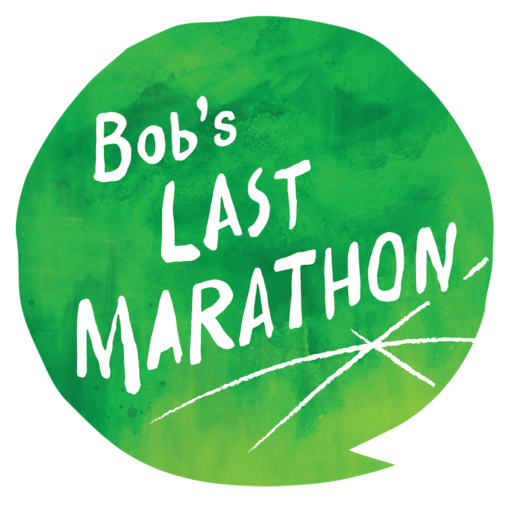Transcript
Having Fun with Improv
“So what is improv?” you may ask. Improv or improvisational theater is performance without a script and without memorizing. If you have ever seen an improv performance, you probably saw experienced actors improvising a complex scene. In cognitive comedy, we do a whole series of fairly simple activities and games that would be considered a warm-up by those experienced actors. All of our groups are on Zoom, though all of these activities can be done in person or on Zoom and in a group or with one other individual. A basic principle of improv is there are no mistakes. So if a person changes a rule or adds something new, we just go with it. This is a very important principle for people in our cognitive comedy group. They learn that everything is accepted, which builds their confidence.
So here are some of the activities that we have found very successful. First, introductions. At the beginning of the group, I ask each person to introduce himself or herself. Say your name and then an add-on. And an add-on might be an adjective that begins with the same letter as your first name. They like that and sometimes they come up with two or three adjectives. I always use Jazzy Jean and they like that too. Another add-on is, “I am great because …” And so as not to intimidate them, I always begin with something fairly minuscule like, “I went to the gym this morning,” or, “I had an egg for breakfast.” They can add on a favorite food, a favorite game, a talent, a favorite TV show, etc. At holiday time, I ask them to say a favorite holiday tradition or food and that’s always lots of fun.
A second activity we like is the ball toss. Each person tosses an imaginary ball to another person saying their name with the add-on. This works well in person and on Zoom with a group or one individual. And again at holiday time, I ask them to send a gift to the person when they send the ball. They often change the ball into many different things, animals, food, works of art. They’re very creative and that adds to the fun.
Another activity we like is called True for Me. One person says something true about him- or herself. If it’s true for the others, they raise their hands and say, “True for me,” and it creates a feeling of commonality. In an in-person group, when I have a break, I ask people who have a “true for me” in common to get together and talk about that. It builds communication and connection.
A very favorite activity is rhyming, and one of the favorite lines we use is, “I know a guy whose name is Bill and Bill is a guy who lives high on a …” and they have to fill in the blank, which he lives high on a hill. Then, “I know a guy whose name is Bill. He likes his pickles very …” and they have to fill in the word dill. So we can go almost through the alphabet finding words to rhyme with Bill. It’s a very good name. Other good names to use are Jane or Mary or Fred. And then sometimes I use names of people in the group. For example, we have an Alice. Alice lives in a palace. Alice has no malice. Sometimes they come up with amazing words that I never would have thought of.
I’ll tell you a little story. A few months ago, a friend and I went to visit a third friend named Pat who had been recently diagnosed with Alzheimer’s. We were concerned that she might not recognize us. Fortunately, she did and she had some memory of old times we had shared together, so we enjoyed chatting about that. After a little while, I told her about the rhyming I do with my cognitive comedy group and I gave her an example. I said, “I know a gal whose name is Pat. On her head, she likes to wear a big black …” and Pat right away got it and filled in the word. So we went through some other words. We had cat and we had bat and mat, a number of things. And Pat was laughing and clapping her hands and looking happier than I had seen her all afternoon. I suggested to her husband, who was her caretaker, that perhaps he could try some rhyming games with her. From the look on his face, I realized that this might be quite a challenge, but perhaps he was willing to rise to it.
Another series of activities we do is physicality or movement, some kind of movement and singing. On Zoom, people can shake out their hands, clap their hands, raise their arms, etc. In person, of course, there’s opportunity for unlimited physical activities, which often create exercise. Songs also have physicality opportunities. We like to do If You’re Happy and You Know It, Clap Your Hands. And then we do, “If you’re happy and you know it, pat your head,” or pull your ear or pat your shoulder. And I often ask members of the group to suggest a movement or a song. There are some other songs that many of you probably know, I’m a Little Teapot, Inky Dinky Spider, You Are My Sunshine. They all have all kinds of opportunities for body movement and these are very helpful for people with some kind of impairment.
Another activity we like is called Categories. First, I give a category to one other person. I might have it be vegetables or colors. That person must say three things in that category, then they toss a new category to another person. They sometimes come up with amazing categories such as football teams, national parks, state capitals, or presidents. Often, I don’t know what to list in the categories but we have a lot of fun with it. I’m amazed that they come up with such interesting categories.
Another activity is called The Minister’s Cat. You can also name it The Rabbi’s Cat or even Grandma’s Cat. It’s an alphabet game. Each person says one line and fills in the blank in alphabetical order. So the minister’s cat is a _______ cat, and the first person must fill in a word beginning with A. The minister’s cat is an adorable cat. The second person must fill in the blank with a word beginning with B. The minister’s cat is a blind cat and so on, each person saying one line until we get through the entire alphabet. What a sense of accomplishment they have.
Often, we do an activity called Bring an Object or Show and Tell. And when people are on Zoom in their homes, I ask them to go and find a favorite object in their house and bring it back and tell us a story. That’s always lots of fun and it helps us get to know each other a little better.
I always end the group with Compliments. I ask everybody in the group to give a compliment to one or two other people, and my associate and I give compliments to as many people as we can. It helps them to end the group feeling good, feeling as if they have done something and accomplished something, and of course, it brings us all closer to each other.
Some of the outcomes or benefits of improv with this group are, first it builds a sense of community. People feel included and connected. They always come in with, “I’m happy to see everybody, how are you?” Or they talk about us: “Jean always sends us funny jokes.” Second, the group builds confidence. They get applause, they get compliments, they try and succeed at something new. Third, they have fun. It’s something to look forward to and they can plan for it. It’s very rewarding when someone says, “This is the best part of my week.” So I think you’ll have some fun. I encourage you to try perhaps one activity at a time. See how it goes, and there is no need to feel that you have to do it perfectly. Try it, see how it works. If it doesn’t work, try it again and I think you’ll enjoy having some fun with improv.
Jean Haskell, EdD

